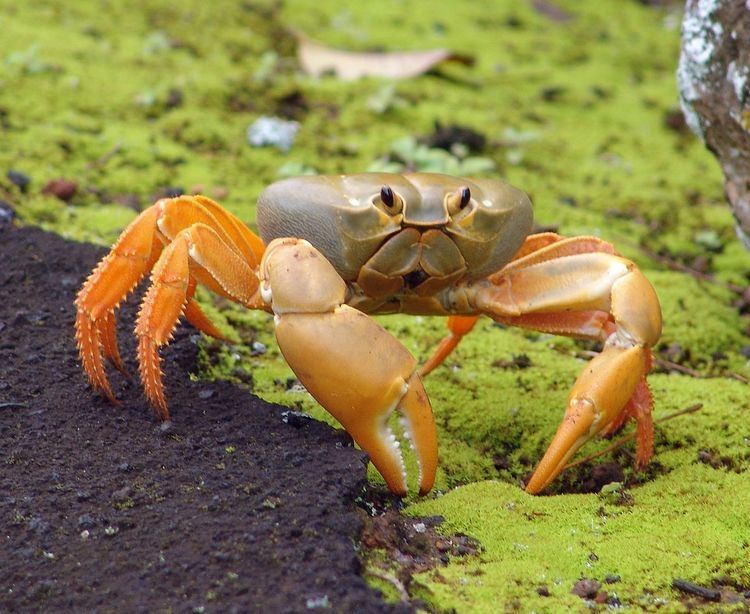 | ||
A number of lineages of crabs have evolved to live predominantly on land. Examples of terrestrial crabs are found in the families Gecarcinidae and Gecarcinucidae, as well as in selected genera from other families, such as Sesarma, although the term "land crab" is often used to mean solely the family Gecarcinidae.
Contents
Terrestriality and migration
There is no clear distinction between "terrestrial", "semi-terrestrial", and "aquatic" crabs. Rather, there is a continuum of terrestriality displayed among the true crabs, although even the most land-adapted crabs must still return to water to release their eggs. Some species of terrestrial crabs can be found many kilometres from the sea, but have to complete annual migrations to the sea. For example, following the Indian Ocean monsoon, the Christmas Island red crab (Gecarcoidea natalis) migrates en masse, forming a "living carpet" of crabs. The crabs can travel up to 1.46 km (0.91 mi) in a day, and up to 4 km (2.5 mi) in total.
Ecology
Terrestrial crabs have often evolved from freshwater crabs, since the physiological changes needed for living in fresh water are pre-adaptations for terrestrial living. On some oceanic islands, terrestrial crabs occupy the top of the energy pyramid.
